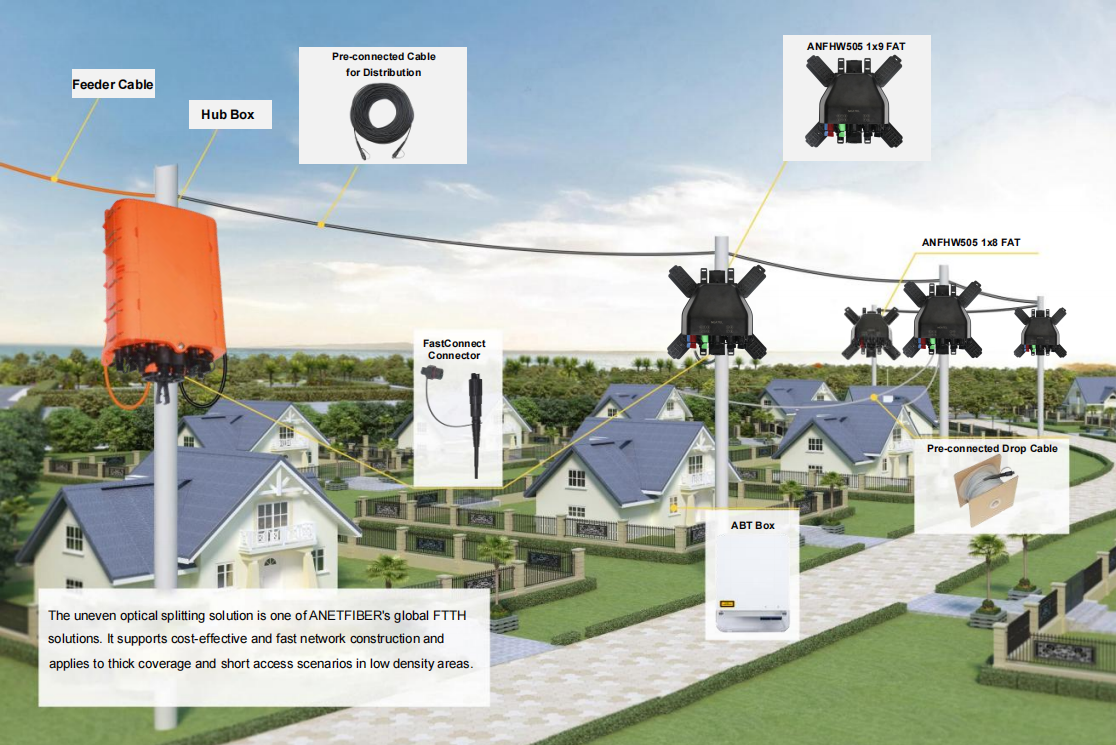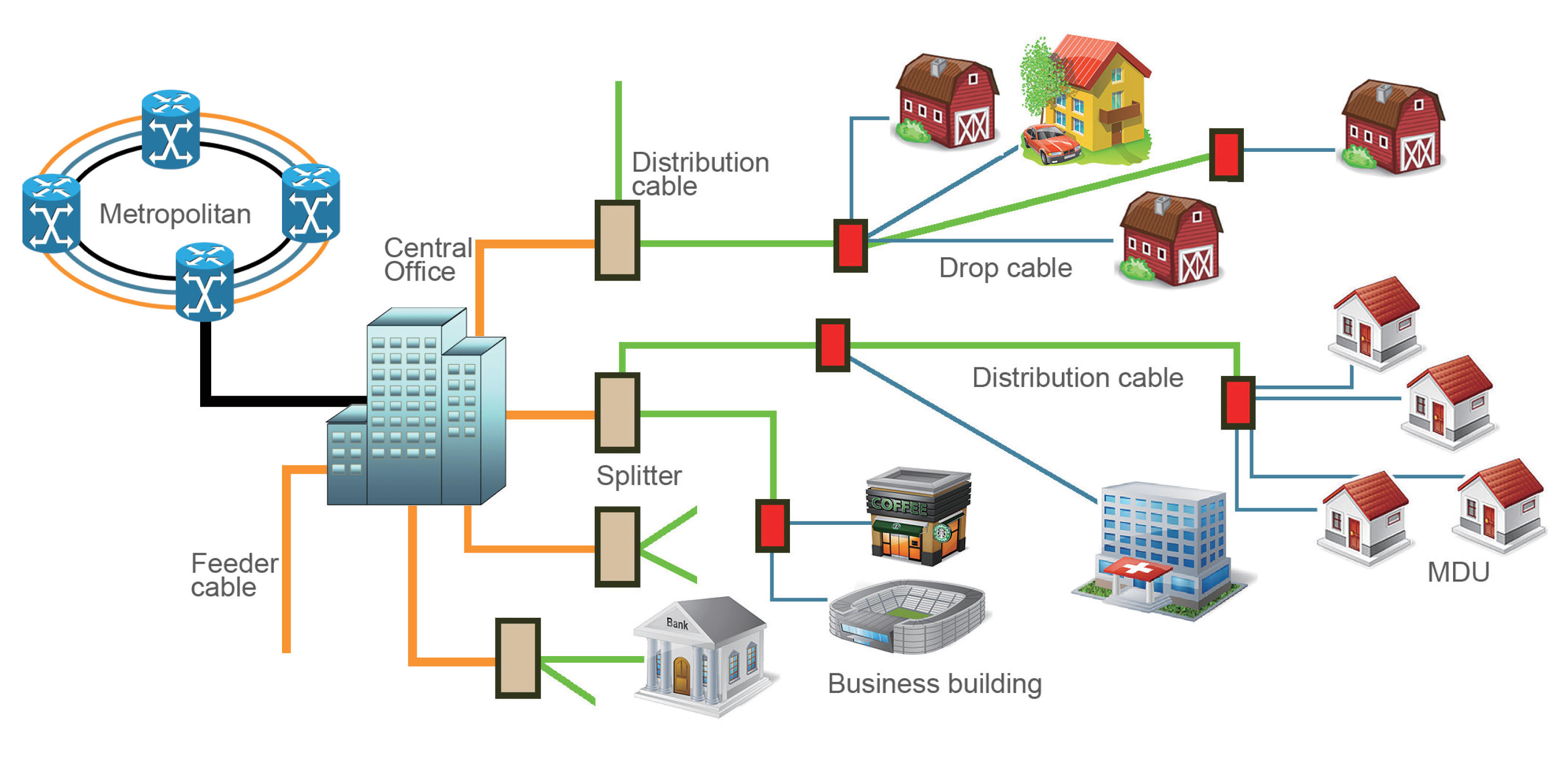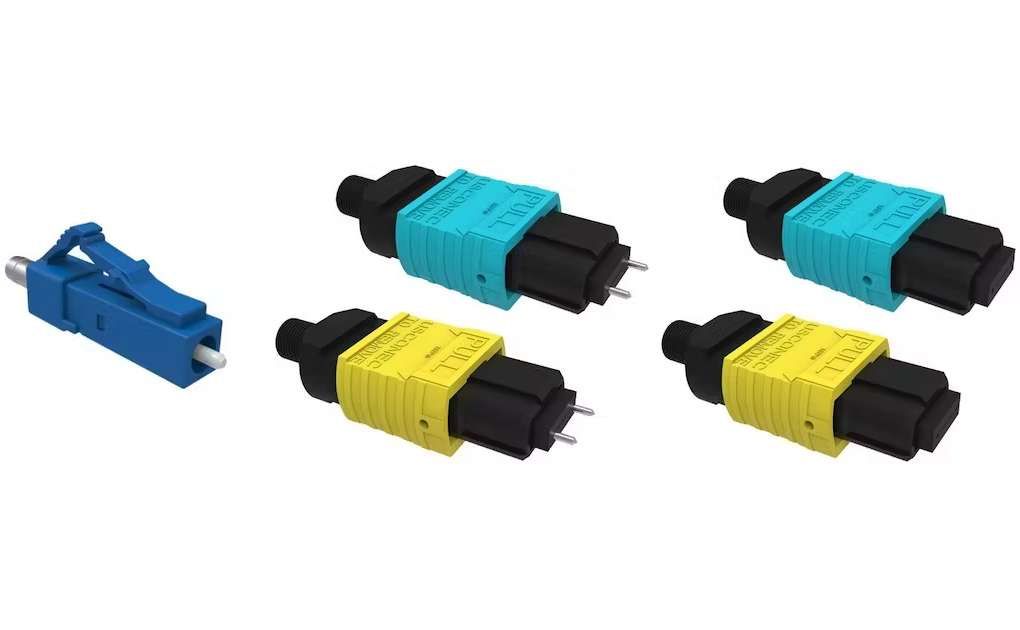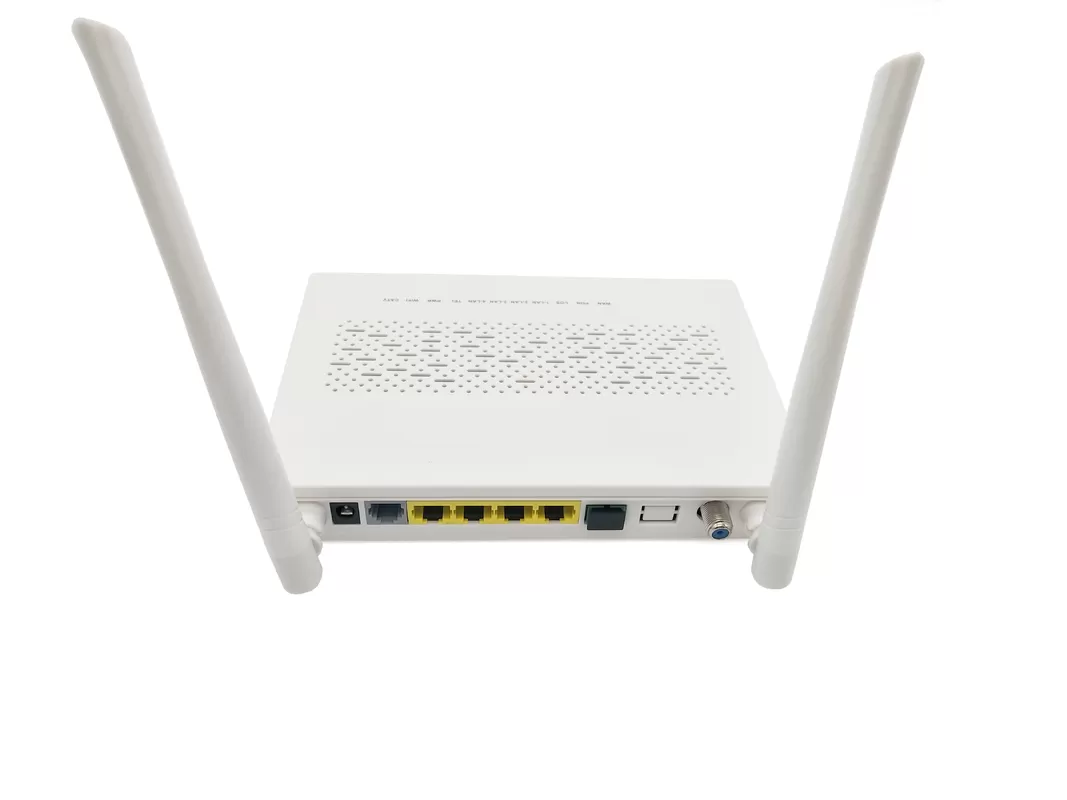The Evolution of FTTx Solutions and Gigabit Passive Optical Network
The Fiber Optic Evolution
This blog delves into the progress of fiber optic technology, with a specific focus on the development of FTTx solutions and Gigabit Passive Optical Network (GPON). As the demand for high-speed internet continues to grow, the evolution of fiber optic technology plays a pivotal role in meeting these needs. From the early days of traditional copper cabling to the current advancements in fiber-optic infrastructure, the journey of fiber optic evolution has been transformative. Let's explore how these advancements have shaped the landscape of high-speed connectivity.
Fiber Optic Technology: "The evolution of fiber optic technology has significantly impacted communication and connectivity."
FTTx Architecture
FTTx architecture, short for "fiber to the x" or "fiber to the home," encompasses the network design and infrastructure utilized to deliver high-speed internet and various services using fiber optic technology. This architectural framework has revolutionized connectivity by enabling faster and more reliable data transmission compared to traditional copper cabling systems.
Overview of FTTx Architecture
The overview of FTTx architecture reveals a sophisticated network layout that facilitates the seamless delivery of high-speed internet and other services. It involves a strategic arrangement of optical line terminals, optical splitters, and optical network units interconnected through a passive optical network. This intricate setup ensures efficient data transmission and supports the growing demand for bandwidth-intensive applications.
Components of FTTx Architecture
The components of FTTx architecture include essential elements such as optical line terminals (OLTs), responsible for managing the data traffic, optical splitters that divide the signal from a single fiber into multiple fibers, and optical network units (ONUs) installed at the customer's premises to receive and transmit data. These components work in unison to create a robust infrastructure capable of delivering high-speed internet access and various digital services to end-users while maintaining reliability and scalability.
Deployment Strategies
FTTx Deployment Methods
FTTx deployment encompasses various methods tailored to different scenarios.
The point-to-point method involves a dedicated fiber connection between the service provider and the customer, making it ideal for individual connections.
On the other hand, the point-to-multipoint method allows a single fiber connection to serve multiple customers, optimizing resources for densely populated areas.
Additionally, hybrid configurations combine both point-to-point and point-to-multipoint methods to address diverse connectivity requirements effectively.
Challenges in FTTx Deployment
FTTx deployment encounters several challenges that impact its implementation.
Infrastructure costs pose a significant challenge as laying fiber optic cables requires substantial investment in materials and labor.
Regulatory hurdles related to right-of-way access and permits can delay deployment timelines and add complexity to the process.
Moreover, skilled labor for installation and maintenance is crucial but may be scarce in some regions, leading to potential bottlenecks in deployment efforts.
FTTx solutions offer versatile deployment methods but are accompanied by challenges such as infrastructure costs, regulatory hurdles, and the need for skilled labor.
GPON Evolution
Evolution of Gigabit Passive Optical Network
The Gigabit Passive Optical Network (GPON) has undergone significant evolution, culminating in higher bandwidth capabilities and improved operational efficiency. This evolutionary trajectory has positioned GPON as a preferred choice for FTTx deployments, meeting the escalating demands for high-speed connectivity and data transmission.
Advancements in GPON Technology
The evolution of GPON technology has ushered in notable advancements, including the implementation of wavelength division multiplexing to optimize the utilization of optical fibers. Furthermore, enhanced security features have been integrated to safeguard data transmission, addressing concerns about privacy and confidentiality. Additionally, GPON technology now supports the delivery of multiple services over a single fiber, enhancing its versatility and applicability in diverse network environments.
By embracing these advancements, gigabit passive optical network (GPON) technology has significantly elevated its capacity and functionality, aligning with the burgeoning requirements for high-speed internet access and robust connectivity solutions.
Impact of FTTx
Economic and Social Impact
The deployment of FTTx solutions has a profound impact on economic growth and social development. By providing high-speed connectivity, FTTx empowers businesses to operate more efficiently, facilitating seamless communication, data transfer, and access to cloud-based services. This, in turn, enhances productivity and competitiveness in the business landscape, contributing to overall economic growth.
Moreover, FTTx plays a crucial role in improving access to essential services such as education and healthcare. It enables remote learning opportunities, telemedicine services, and access to online resources for both rural and urban communities. This fosters educational advancement and better healthcare outcomes by bridging the digital divide and ensuring equal access to information and services.
Environmental Benefits
The adoption of FTTx solutions brings about significant environmental benefits by reducing the carbon footprint associated with internet connectivity. Unlike traditional copper-based networks, fiber optic infrastructure consumes less energy for data transmission, leading to lower overall energy consumption. Additionally, the longevity of fiber cabling reduces the frequency of replacements compared to copper cabling systems, promoting sustainable development practices by minimizing material waste.
The environmentally friendly nature of FTTx solutions aligns with global efforts towards sustainability and reduced environmental impact. By lowering energy consumption and promoting sustainable practices, FTTx contributes positively to environmental conservation efforts while meeting the escalating demands for high-speed connectivity.
Fiber Optic Advancements
The continuous evolution of fiber optic technology, including FTTx solutions and GPON technology, has led to a significant revolution in high-speed internet access and connectivity. These advancements have not only transformed the way data is transmitted but have also brought about positive economic, social, and environmental impacts.
Fiber Optic Advancements: "The advancements in fiber optic technology have redefined high-speed internet access, fostering positive changes across various sectors."
The deployment of FTTx solutions has empowered businesses to operate more efficiently by providing seamless communication channels and access to cloud-based services.
Furthermore, the impact of FTTx extends to essential services such as education and healthcare, bridging the digital divide and ensuring equal access to information and resources.
From an environmental perspective, the adoption of FTTx solutions has significantly reduced energy consumption for data transmission while promoting sustainable development practices.
These advancements underscore the pivotal role of fiber optic technology in driving progress across economic, social, and environmental domains.
See Also
Understanding the Role of Blockless PLC Splitters in FTTX and PON Networks
The Future of Fiber Preconnection Solutions: Exploring MTP-LC Duplex 12cores Trunk Cable Patchcord
The Future of Fiber Optic Splice Closures: Exploring the 24 Core Configuration
About US
Follow Us
AnetFiber company's main products are indoor and outdoor optical fiber cables, outdoor waterproof pre-connected fiber-to-the-home products, PLC optical fiber splitters, optical fiber jumpers and pigtails, MTP®/MPO high-density big data product solutions, optical fiber field quick connectors and research and development molding, injection molding and production of optical fiber distribution boxes, optical fiber chassis cabinets, the market has expanded to the world, Europe, America, Asia, the Middle East and Latin America.
Address
Shenzhen City, Baoan District, Yanluo Street, Tangxiayong Community, Yangyong Industrial Road, Tonggangda New Energy Vehicle Park 406
Contacts
+86 199 2655 3586




